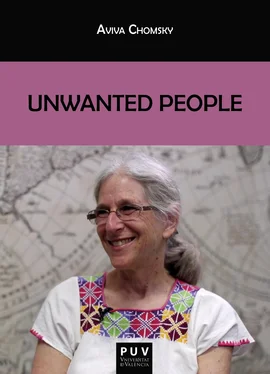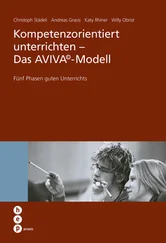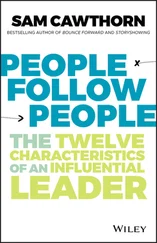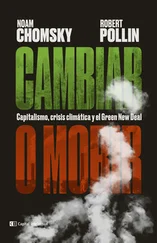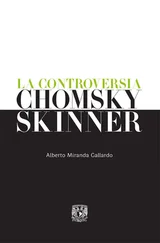Because worker centers are not registered in any kind of central location, and because they vary from small, ephemeral organizations to large and solid ones allied with labor unions or one of several national networks, it’s hard to give an exact account of their numbers. Fine found only five nationwide at the movement’s tentative beginning in 1992, and 160 in 2007. 17 Corey Kurtz listed five in Boston in 2008: the Chinese Progressive Association, the Brazilian Immigrant Center, MassCOSH, the Chelsea Latino Immigrant Community, and Centro Presente. 18
Today nine different centers belong to Boston’s Immigrant Worker Center Collaborative, founded in 2005, while others (including two of those in Kurtz’s study, the BIC and Centro Presente) continue their work outside of the Collaborative. Most, like the Chinese Progressive Association, which formed in 1977 and founded one of the first Boston Worker Centers in 1987, the Brazilian Women’s Group, which began its workers’ project around 2010, and New Bedford’s Centro Comunitario de Trabajadores, formed in the wake of the immigration raid at the Michael Bianco factory in 2007, are based in specific immigrant communities’ organizations. The Chelsea Collaborative formed in 1988 as a city-wide coalition in an overwhelmingly Latino city, and began its Latino Immigrants Committee focusing on workers’ rights in 1998; the Lynn Worker Center for Economic Justice, formed in 2008, is affiliated with the North Shore Labor Council (the only union-affiliated Center in the IWCC); MassCOSH is part of a nationwide Coalition for Occupational Safety and Health originally created by the new federal OSHA in the 1970s, and also a member of the national Interfaith Worker Justice coalition.
Stories from the Field
While many scholars argue that unions must organize these workers if they wish to recover their power and relevance in today’s economy, the obstacles revealed in these cases also help explain why unions have been reluctant or unable to do so. The history and nature of Boston’s unions, the nature of today’s precarious, low-wage economy, Boston’s historic racial divide, and the onslaught of anti-immigrant legislation and sentiment all contribute to a fragile landscape for organizing.
Boston’s Chinese Progressive Association illustrates the interweaving of ethnic, national, and political identities that underlie many worker centers. In some ways today’s multifaceted immigrant ethnic radicalism is reminiscent of that which underlay U.S. union organizing a century ago. But new immigrant workers and their community activism differ in fundamental ways from today’s mainstream unions. 19
P&L Sportwear and the Birth of a Worker Center
The CPA worker center owed its genesis to massive layoffs at the P&L Sportswear Company in East Boston, where hundreds of Chinatown women worked. 20 This campaign, and another at Power One International, illustrate much about immigrant workers’ place in the economic restructuring process. The processes also suggest why unions have been largely absent in many worker center campaigns. Both of the campaigns were spurred by workers at factories that were laying off large numbers and preparing to close—typical immigrant employers, but not fertile field for union organizing. 21
When P&L announced its closing in 1985, recounts Chen, “these women, they are like god, we're going to lose our jobs, so what are we going to do? So they came to CPA to ask for help. So CPA started trying to organize them, really about trying to get access to unemployment, because at that time, you know, there was no language access for people, so the worker center actually fought for language access... And so basically the garment workers, we have a right to jobs! And so together with some of the activists, they also formed, some of the more English speaking younger people, they actually formed a support committee to support the garment workers. And they demanded [state-funded] retraining so they were able to win funding through a lot of rallying, a lot of organizing, money for training, so we actually started the first bilingual vocational training programs for people with limited English proficiency. So basically the workers met with the city, met with the state, or the people who do the vocational training, and these are the things that we want... So after the victory, that was like around 1987, and people really felt like we need to have a worker center, where we would primarily focus on workers' rights, and a place for all the workers to come for assistance...
“So we organized garment workers, right? And we got the retraining, we got them into their jobs... It was a lot of organizing around basically unemployed rights. And language access, to unemployment, and then, making the whole process easier for people.”
As Chen concluded, “we support the workers where they are at.” The emphasis on this campaign was on strengthening legal rights and ensuring workers’ access to these rights, rather than necessarily organizing for a long-term voice in the workplace. The target was the state, rather than the employer. The CPA drew on its long history of ethnic community organizing and a commitment to grassroots mobilization. Its pioneering worker center exemplified the organization’s orientation towards radical social change. 22
Power One
A second major CPA campaign involved Power One International, a California-based multinational that employed several hundred low-wage and temporary workers at its Allston plant manufacturing power conversion equipment. In 2001, Power One began laying off workers and announced its imminent closing. Chen offered an analysis that placed the situation in global context, and also showed immigrant workers bring their own concepts of labor rights.
“The electronics manufacturing industry was declining, mainly also because of NAFTA, and all those things, right? And so we started to see a bulk of electronic manufacturing workers being laid off... In 2001... one of the major factories in Boston, Power-One, they laid off about 400 workers, there's about 300 Chinese, 100 Latinos, and they were moving the factory to Shenzhen China, and you know, and Mexico. Which is ironic because for more profit, right?
“And the business is not declining, but what they did was a major layoff... there were 30 workers who were going to stay to do just samples... they were just kind of like the more vulnerable workers, the newer immigrants, some of them were undocumented, I think it's true for both Latinos and Chinese. And then some people were taking piece work, to work at home, but they were not paid for overtime and other things. So meanwhile this company is not losing any profit, they just want to make more profit...
“Really what the workers wanted was severance pay. Because in China you actually have legal right to severance pay and here you don't. But we started out with that and we find out all these labor violations. Initially, because the workers organized a work stoppage themselves. And then they're just talking among themselves, like this is crazy, it's all the people who kiss up to the team leaders, the supervisors, get to stay. So they organized the work stoppage, and then they were threatened by the company. And so they came to CPA and we're like well, you guys gonna have to continue to take collective action. And then we find all the labor violations, all these things. But we eventually organized the workers actually to fight to get more funding for vocational training, retraining...”
In this case, the CPA sought support from Greater Boston Legal Services to file unfair labor practice charges against the company for its failure to pay minimum wage and overtime, and discrimination against and harassment of workers. 23 In the face of noisy public protest and the legal charges, the company agreed to negotiate with workers and granted concessions on overtime and severance pay. Workers also obtained close to $1 million from the federal government in federal trade adjustment assistance funds, to be used for extended unemployment benefits, English and vocational training, and other services. As two GBLS members who worked on the case concluded, “Legal aid programs must forge deep and lasting community partnerships to make enduring advances in communities of color.” 24 Like many worker center campaigns, this one involved specifically labor issues, and made use of labor legislation and enforcement institutions as well as worker mobilization—but did not involve any union.
Читать дальше
